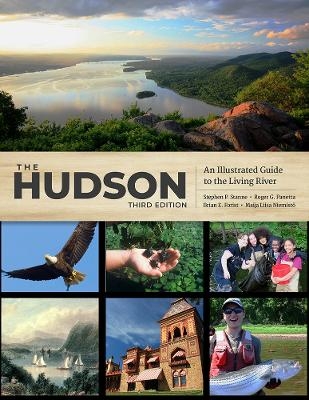
The Hudson
Rutgers University Press (Verlag)
978-1-9788-1406-6 (ISBN)
- Titel z.Zt. nicht lieferbar
- Versandkostenfrei innerhalb Deutschlands
- Auch auf Rechnung
- Verfügbarkeit in der Filiale vor Ort prüfen
- Artikel merken
Since 1996, The Hudson: An Illustrated Guide to the Living River has been an essential resource for understanding the full sweep of the great river's natural history and human heritage. This updated third edition includes the latest information about the ongoing fight against pollution and environmental damage to the river, plus vibrant new full-color illustrations showing the plants and wildlife that make this ecosystem so special.
This volume gives a detailed account of the Hudson River’s history, including the geological forces that created it, the various peoples who have lived on its banks, and the great works of art it has inspired. It also showcases the many species making a home on this waterway, including the Atlantic sturgeon, the bald eagle, the invasive zebra mussel, and the herons of New York Harbor. Combining both scientific and historical perspectives, this book demonstrates why the Hudson and its valley have been so central to the environmental movement.
As it charts the progress made towards restoring the river ecosystem and the effects of emerging threats like climate change, The Hudson identifies concrete ways that readers can help. To that end, royalties from the sale of this book will go to the non-profit environmental advocacy group Hudson River Sloop Clearwater, Inc.
STEPHEN P. STANNE has taught about the Hudson since 1980, coordinating the education programs of Hudson River Sloop Clearwater and those of the Hudson River Estuary Program of New York’s Department of Environmental Conservation, in partnership with the New York State Water Resources Institute at Cornell University. ROGER G. PANETTA, now retired professor of history at Fordham University, has made the Hudson River a central subject of his teaching, writing, and curatorial work. He is also editor of Westchester: The American Suburb, Dutch New York, and Kingston: The IBM Years, and author of The Tappan Zee Bridge and the Forging of the Rockland Suburb. BRIAN E. FORIST coordinates the undergraduate program in Outdoor Recreation, Parks, and Human Ecology at Indiana University—Bloomington. His many years of experience as an environmental educator include six years as education specialist with Clearwater. MAIJA LIISA NIEMISTÖ worked for Clearwater for ten years as an onboard educator and director of the organization’s education programs. In 2019 she joined the Hudson River Estuary Program and the New York State Water Resource Institute as an environmental science education specialist.
Contents
Preface
Chapter 1: A Physical Overview of the Hudson
Chapter 2: Energy Flow and Nutrient Cycles in the Hudson
Chapter 3: The Hudson's Habitats and Plant Communities
Chapter 4: The Hudson's Invertebrate Animals
Chapter 5: The Hudson's Fishes
Chapter 6: The Hudson's Birds and Beasts
Chapter 7: Exploration, Colonization, and Revolution
Chapter 8: The Romantic River
Chapter 9: Industrialization and the Transformation of the Landscape
Chapter 10: Conservation and Environmentalism
Chapter 11: Resolving River Conflicts
Chapter 12: Is the Hudson Getting Cleaner?
Chapter 13: Climate Change and the Hudson
Afterword
Sources and Suggested Readings
Glossary
Acknowledgments
Index
About the Authors
| Erscheinungsdatum | 25.02.2021 |
|---|---|
| Zusatzinfo | 269 b-w images, 85 color images |
| Verlagsort | New Brunswick NJ |
| Sprache | englisch |
| Maße | 216 x 279 mm |
| Gewicht | 966 g |
| Themenwelt | Sachbuch/Ratgeber ► Natur / Technik ► Natur / Ökologie |
| Reisen | |
| Geisteswissenschaften ► Geschichte ► Allgemeine Geschichte | |
| Geisteswissenschaften ► Geschichte ► Regional- / Ländergeschichte | |
| Naturwissenschaften ► Geowissenschaften ► Hydrologie / Ozeanografie | |
| ISBN-10 | 1-9788-1406-2 / 1978814062 |
| ISBN-13 | 978-1-9788-1406-6 / 9781978814066 |
| Zustand | Neuware |
| Haben Sie eine Frage zum Produkt? |
aus dem Bereich


